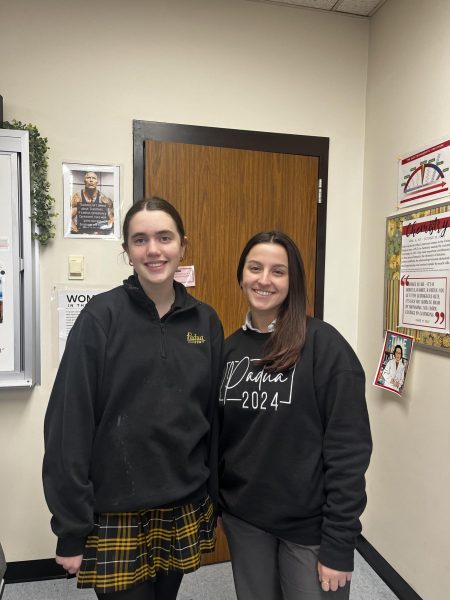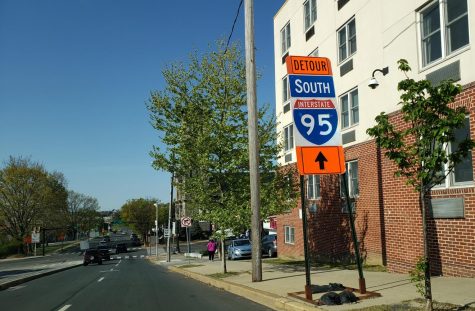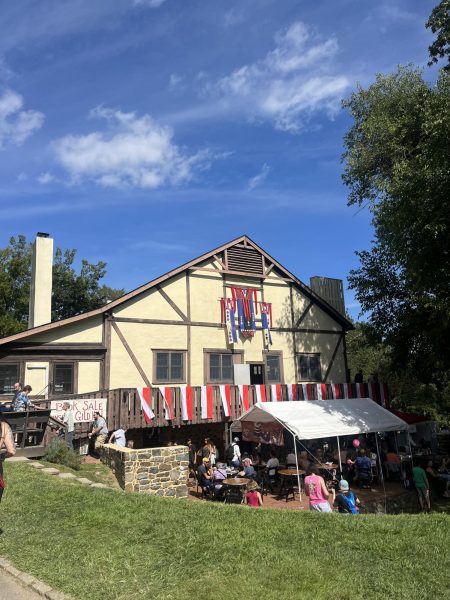Does Padua Have Cliques?
This chart was produced by the study to show their findings. It separated the groups into a hierarchy with 3 sections.
In high school movies, there are classic cliques- the jocks, cheerleaders, brainiacs, and goth kids. But, in the modern day these groups have shifted. Every year, the University of Chicago and the University of Texas at Austin conducts a study on peer groups in high schools. They interview recent high school graduates from two universities and ask them to discuss common friend groups at their high schools during the late 2010s. With this information, they create a chart with each clique and the hierarchy of how popular the groups are.
This year the cliques are populars, jocks, floaters, good-ats, fine arts, brains, normals, druggie/stoners, emo/goths, anime/manga, and loners. Over the years, groups have come and gone with changes in popular culture and the hierarchy has shifted.
As an all-girls private Catholic school, Padua isn’t like most high schools. So, this list of cliques isn’t completely the same.
Cliques at Padua
The first thing to consider is if Padua really has cliques. Emma Law, a Padua Junior, said she feels like, “…some girls all hang out together. But it’s not very like, cliquey. It’s more like you have your friend group. And then you have the people that you’re kind of friends with.” Senior Sam Watkins agreed, saying, “There’s definitely separation.”
Mrs. Manelski, the Dean of Students, believes the popular group is different at Padua than in other schools. She said, “the kids that are identified by others as the popular kids… other kids almost named them that way. And here, they’re not necessarily interested in being dominant… they just have certain strengths.” However, Manelski also said, “I think some of the negative stereotypes of popular people are just as hurtful to popular people as negative stereotypes of shy people or geeks.”
When Law was asked if she thought there is a popular clique, she said, “Everyone’s generally the same. But then there’s just like some girls who do more things than others, but I don’t really think that makes them bigger than everyone else.”
Anime kids are a new group that emerged from the popularity of the anime television genre. According to a participant in the study, anime kids are described as, “being unattractive, outlandish, and socially awkward.” Another participant said they wore, “…a lot of fandom stuff and cosplays. You have to have weird colored hair and headphones.” Law believed this description is, “True for one certain person. I feel like the people who made that comment are definitely in the top [of the hierarchy] because usually the top people think everyone below them is weird.”
Kendall Pastreich, a self-proclaimed anime kid, said that the participants’ description of anime kids are mostly right, “…but it’s really generalized.” When asked how she would re-write the description of anime kids, Pastrich said that, “They just like anime and they like certain things so they wear clothing that has stuff they like on it…. People like what they like and wear what they want”
In Manelski’s opinion, interests, like anime, should not define a person. She said,“I take those things like anime… as symbols of things that are meaningful to them rather than who they are.”
Academic Anxiety
One observation the researchers working on the study made was how increased academic pressure and pressure to look well-rounded for colleges has affected the cliques. This was especially evident in the brains group, but Law feels this is true for every group at Padua. This is because, as Manelski says, “the emotional difference of girls… increases the sense of anxiety here. But I think a lot of people actually thrive on that.”
However, Padua realized academic anxiety is an issue that needs to be addressed. Manelski says that, “…we [the staff] are trying to break down a little bit that I have to be so well rounded. Well rounded doesn’t mean you do everything, it means you do a few things well.” She believes that being well-rounded shouldn’t mean that you have to be in every sport and every club, which causes students a lot of anxiety. Instead, she said it’s better to do a few things very well.
What About Padua Changes Things?
Differences between Padua and other schools causes changes in our cliques. According to Manelski, the main difference is our culture. She said, “…it just thrills me how much support kids get for winning National History Day… When kids do great in the play, or the chorus… kids are genuinely excited when other kids hit a home run.”
Manelski thinks this culture all starts in the classroom because, “people are responsible for things [and] people are included. The teachers do not let anybody hide.” She believes that being pushed during class to be your best self helps you to create better and deeper friendships outside of the classroom.
Purpose of the Study
The purpose of this study was to help adults understand what high schoolers are going through. They hope to use the information collected to better reach our generation and run more effective ad campaigns that reach us. When asked if she thought this information could actually accomplish this, Watkins said, “Yeah, definitely. Because if you show it to the administration… [they can] acknowledge these kids for who they are, and try to make them feel included.”
Are These Labels Helpful or Harmful?
At the end of the day, this study was done to help high school students. But, placing labels on them can be either helpful or harmful. “I feel like these labels could be nice, because you know what kids you want to hang out with. But I feel like it’s also not good because it kind of stereotypes people,” said Law.
Watkins agreed, saying, “If you’re looking for the kids [who are] the same as you, it would be helpful… And then it can also be harmful because then you do get into the whole hierarchy of the different people… And then, if you don’t fit into those groups, you automatically kind of know that you’re the lesser.”
Manelski, however, is firm in her stance on this topic. She says that, “it’s sad when kids live in these boxes. Because the more we interact with people who are different than us, the more we can accept people for who they are.”
However, Manelski’s issue is with cliques, not friend groups. The distinction, she says, is that, “cliques are kind of like gangs in that you have to exhibit certain behaviors to get acceptance. And if you deviate from those behaviors, you are ostracized or punished by rejection or mocking.” Basically, “I think cliques are fear based. I think friend groups are open.”







